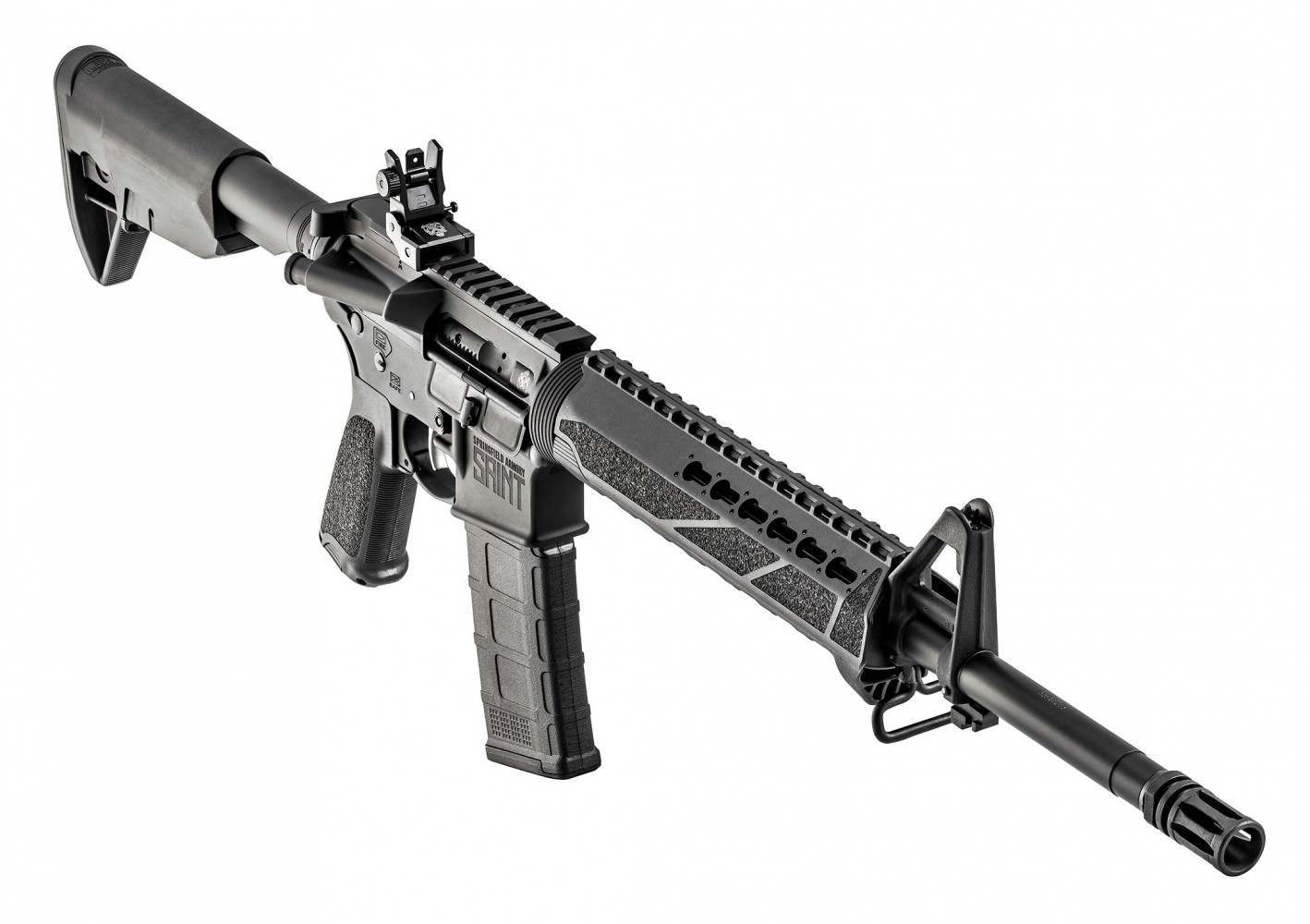
Liberals will let cities ban handguns and pledge to ban ‘military-style assault rifles’ if elected
With 32 days to go before the election and a week since a brazen mass shooting left Malton residents reeling, Justin Trudeau’s Liberals are promising to ban “all military-style assault rifles, including the AR-15,” and among other reforms give municipalities the power to extend their own bans on certain weapons.
The proposal was applauded by Mississauga Mayor Bonnie Crombie and, perhaps predictably, some of the Liberal candidates running in the city. “Military assault rifles such as the AR-15 have no place in our cities,” said Crombie, in a statement that was provided to The Pointer. The former Liberal MP for Mississauga-Streetsville added, “While I believe the federal government is in the best position to effectively enforce gun control measures, I support exploring a municipal/regional ban on handguns.”
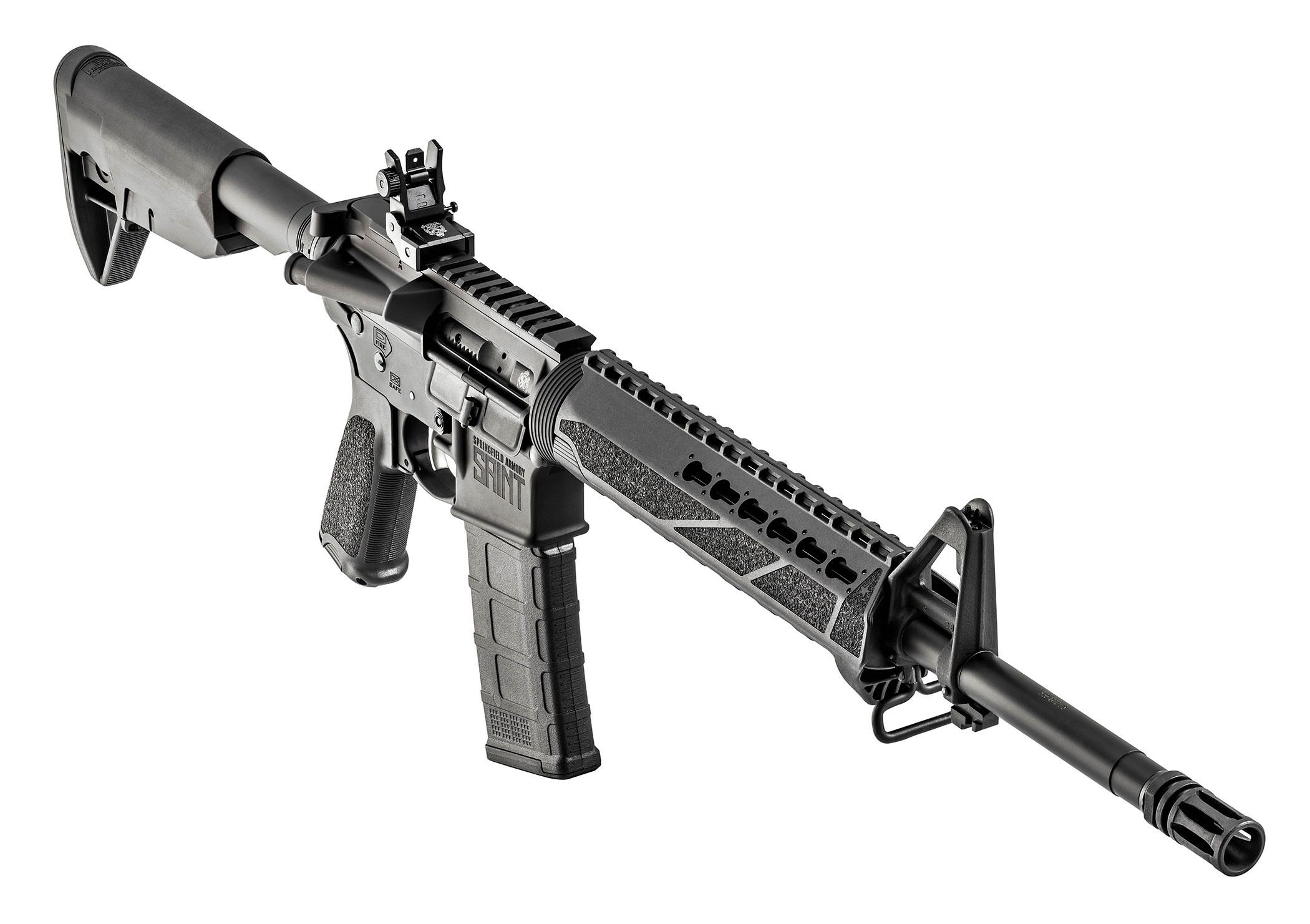
The AR-15 semi-automatic assault rifle can fire between 700 and 950 bullets a minute
The Liberals said they were open to working with the provinces and municipalities to restrict or even ban handguns. It’s a similar pledge to one made by the NDP and Leader Jagmeet Singh. Peel police said semi-automatic handguns, which can discharge as many as 30 bullets in three seconds, were used in the Malton mass shooting.
Crombie also called for getting “illegal handguns off our streets. Sixty-nine percent of handguns seized by Peel Police are illegal firearms smuggled in from the U.S. via land and water crossings. Better coordination is needed between the U.S. and Canadian Border Protection to stop the flow of illegal guns crossing our borders.”
“Stephen Harper made it easier to purchase and transfer a weapon; we reversed that,” Trudeau said at a Friday afternoon news conference in Toronto. “But also, as Canadians are losing their loved ones to gun violence, not enough has changed.”
The Malton shooting, which left five injured and bystander Jonathan Davis 17, dead, made national headlines. A vigil in his memory is being held tonight at the Malton Community Centre. Mississauga Councillor Carolyn Parrish, in whose ward the Malton shooting happened, said “banning guns is good,” but she wants a more upstream approach to combating gun violence as well. “That’s the end of the food chain to creating criminals. We need housing, jobs, education and social services, but they cost significant amounts of money, invested by all levels of government. Ban guns, but house people,” she urged, in an email to The Pointer Friday. “This is a stop gap measure for my folks in Malton. While a youth hub is being built, what we need is a police division to stop the Malton village from being an open space to be invaded by criminals, with no fear of being caught. Two stores were robbed last night! It’s so ‘normal’ it’s not even in the news. We have 3,500 names already on a petition for a standalone police division in Malton and two online ones up and running today.” Parrish is helping organize Friday evening's vigil for Davis.
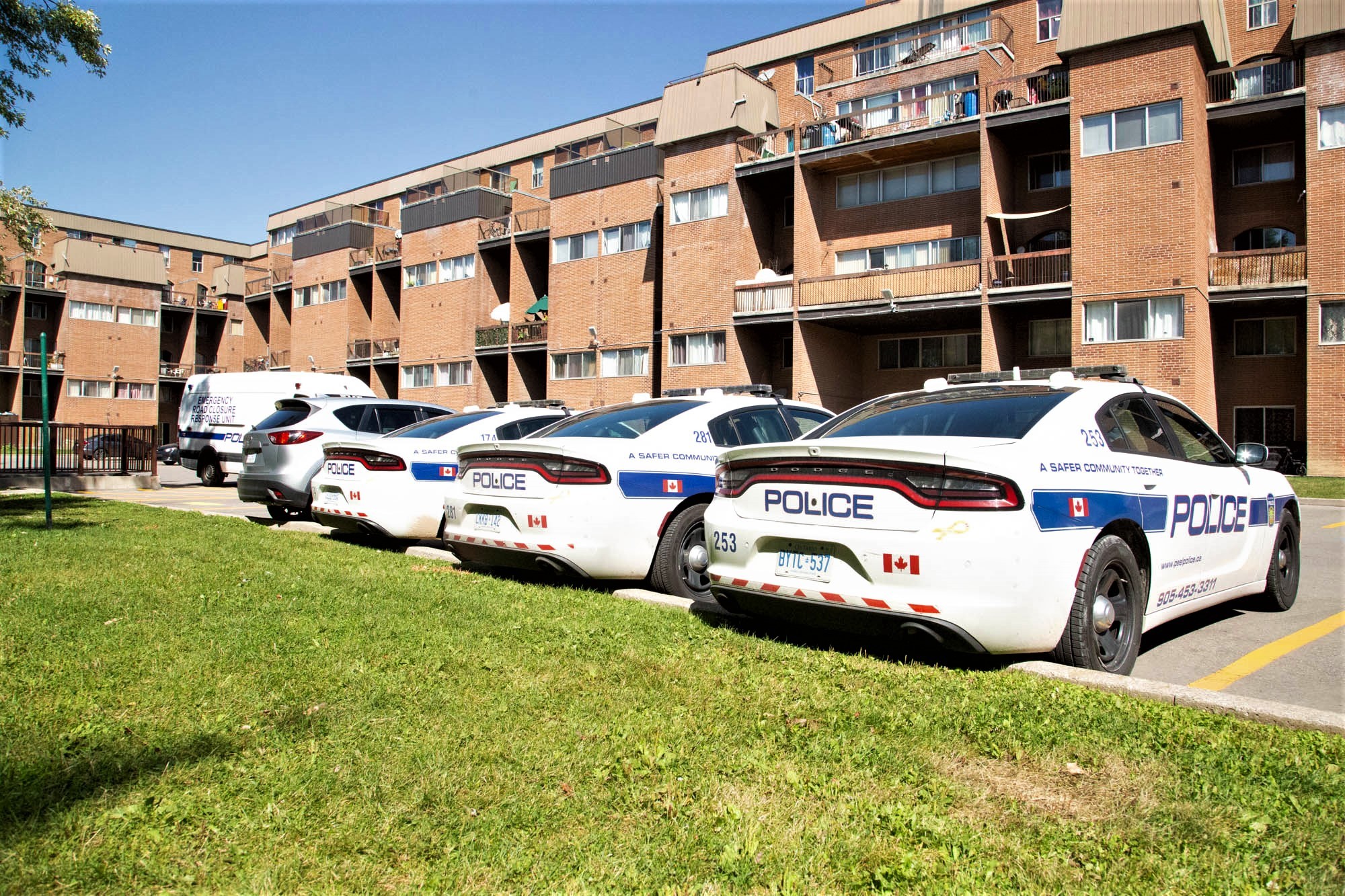
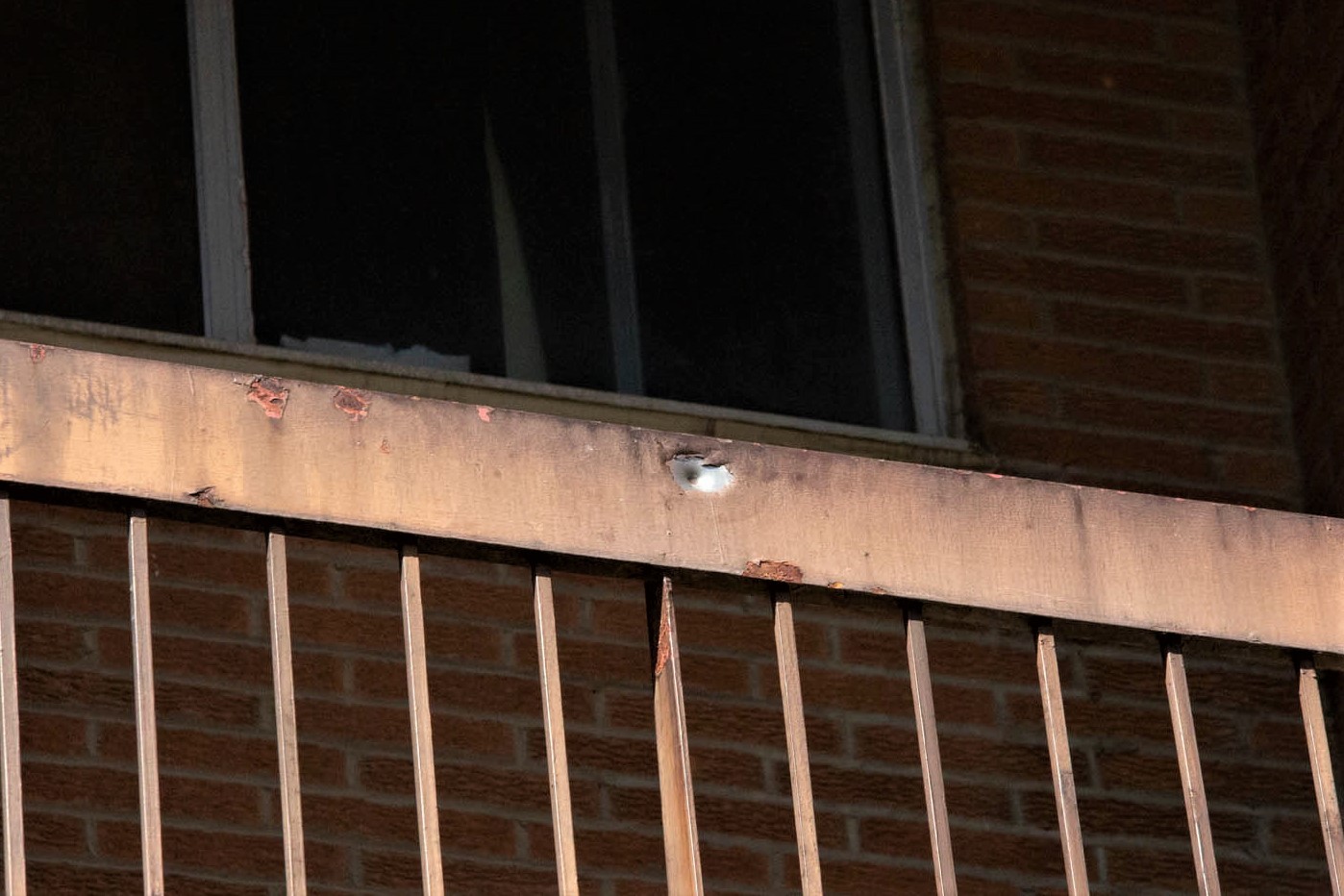
A heavy police presence was still visible three days after the Malton shooting at an apartment complex, where more than 130 bullets were fired
Parrish, who like Crombie is a former Liberal MP, fought hard to reverse a cost-cutting decision made by the Peel Police Services Board to close a community police station in Malton. She was unsuccessful in convincing the board to keep it open, and it closed in February 2018. The mass shooting on Sept. 14 took place a few minutes’ walk from where the station used to be.
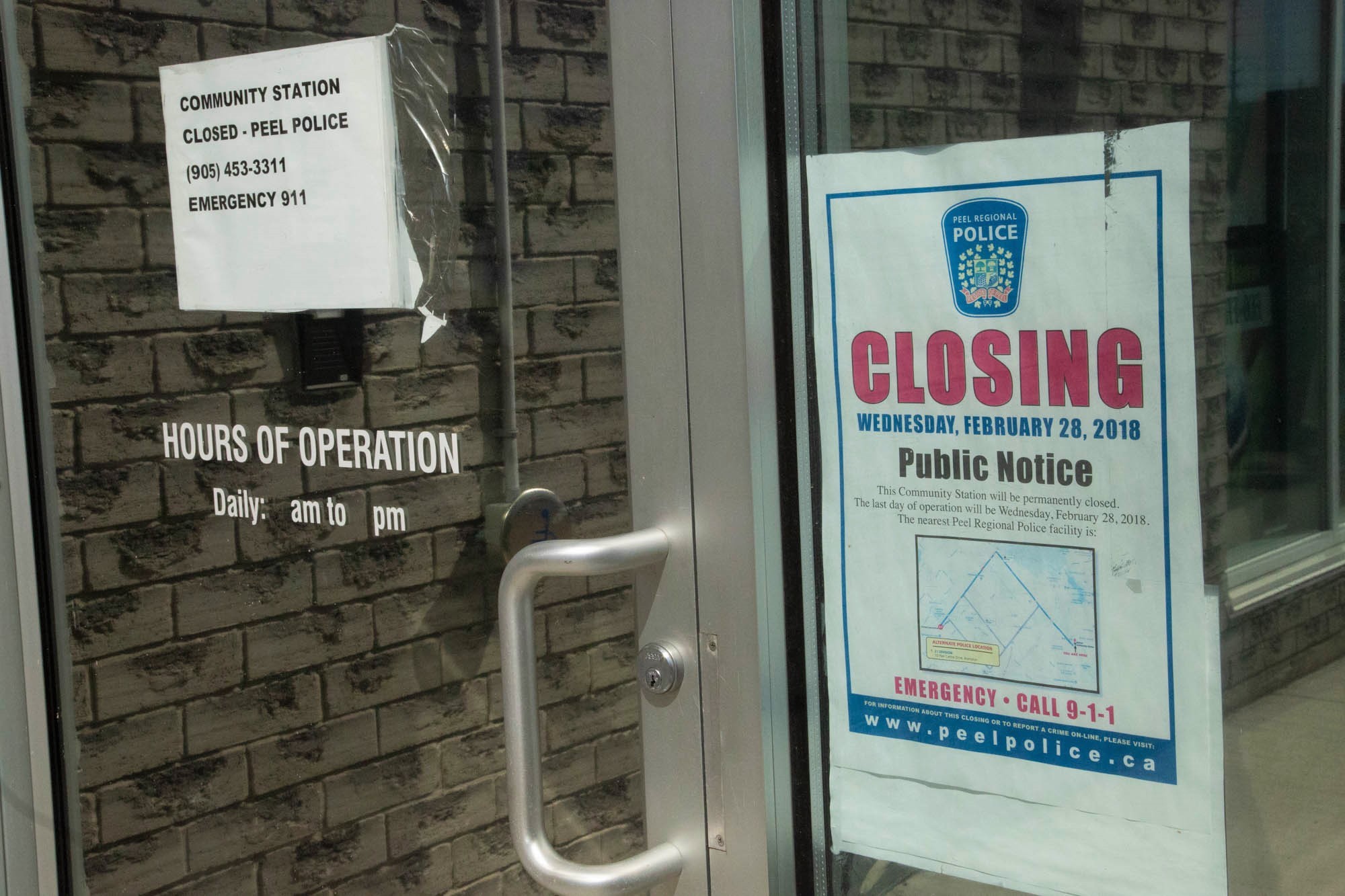
The Malton Community Police Station was closed last year due to funding issues
Liberal incumbent Navdeep Bains, who is running in Mississauga–Malton, tweeted: “We need common sense action to crack down on gun crime. So that’s exactly what a new Liberal government is going to do.” His Conservative challenger, Tom Varughese, did not respond to The Pointer’s request for comment but did retweet a statement from Conservative Leader Andrew Scheer’s communications director, which read: “Here is @AndrewScheer's plan for #ASaferCanada: Gun laws that target criminals, cracking down on gangs, equipping police to protect. Going after criminals who use guns to commit crime. That's smart policy.”
Brampton has had its fair share of gun violence as well. An 18-year-old Brampton teen was shot dead in a car-to-car shootout that turned into a police chase along Highway 410 at about 2:30 a.m. Monday. Violent crime in Mississauga and Brampton worsened at three times the national rate of increase between 2014 and 2018.
Brampton Mayor Patrick Brown told The Pointer earlier this week, “gangs don’t respect postal codes. Sixty percent of our shootings in 2019 have been gang-related. We don’t get the provincial funding for combating gang activity that Toronto gets. I’m not going to sit quietly and not speak out. We must speak the truth. Enough is enough.” Most gang activity occurs in a relatively small number of urban areas. In 2016, about 54 percent of firearm-related homicides, according to provincial statistics, were linked to gang activity.
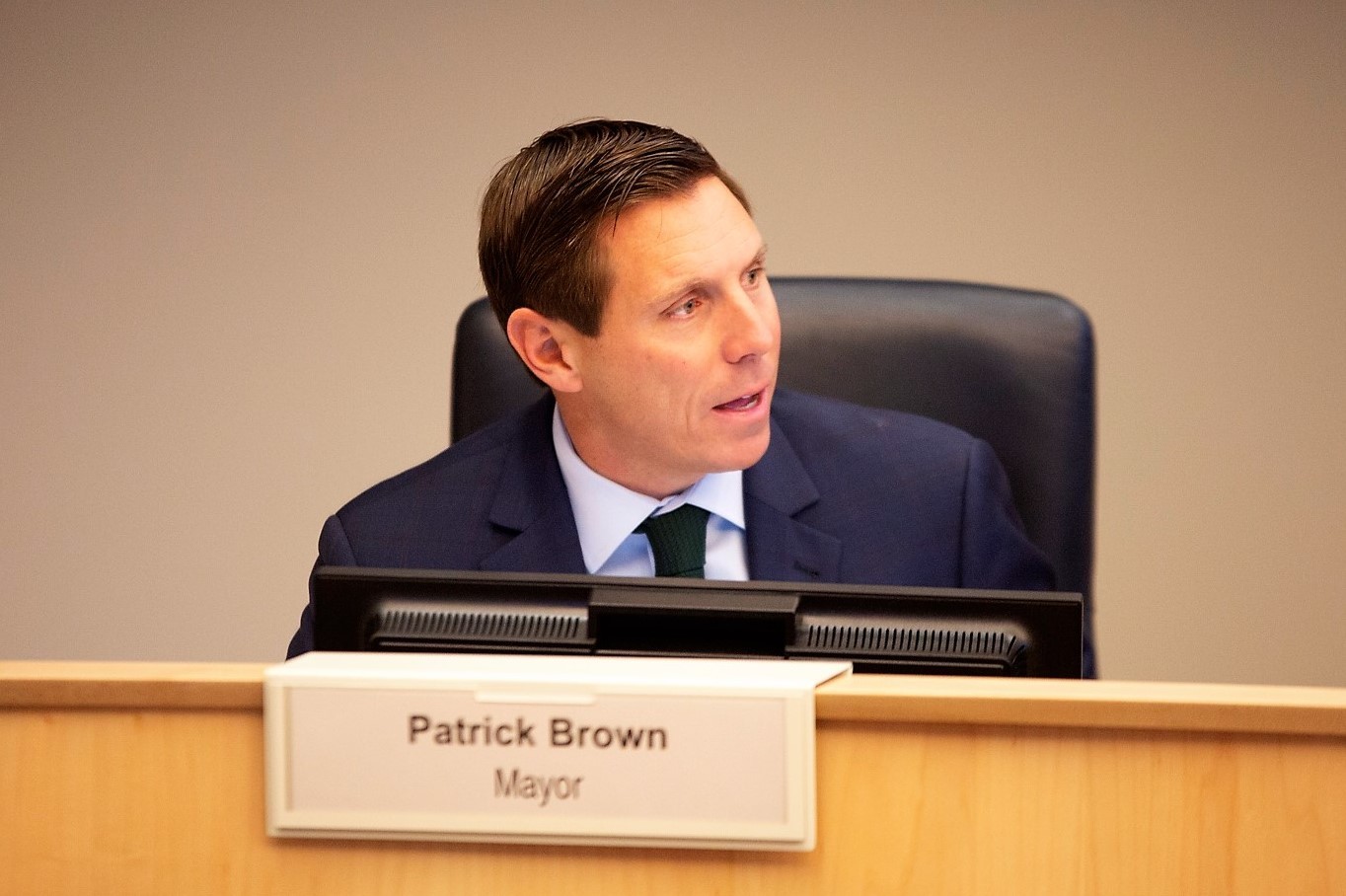
The federal government and provincial partners last month announced funding for a new Peel-based “intensive firearms bail team,” a group of Crown attorneys whose job is to provide judges with pertinent information on whether bail should be granted and under what conditions. Gang members often end up back on the streets not long after being arrested for a gun-related crime, only to commit further crimes.
Toronto received a similar bail team in 2018 and since then, 64 percent of all cases resulted in continued detention rather than bail.
However, Mississauga and Brampton missed out on receiving the province’s announced “justice centres” to comprehensively address gang activity. Toronto will get two, Kenora and London one each. More are planned, but it's unclear where they will be located.
Talk of an assault weapons ban is nothing new in Canada. Alexandre Bissonette, who was convicted of killing six worshippers in the Quebec City Mosque in 2017, used an assault-style weapon. Survivors of that shooting pleaded with the federal government to implement a ban.
The AR-15 — capable of semi-automatic fire, throwing bullets at a distance of 450 metres accurately and killing at great speed— is similar to the U.S. military’s main service rifle, the M16, and has been the weapon of choice in many mass shootings.
The Liberals’ proposal not only promises to ban such weapons, but also to institute reforms on firearm ownership. These include a gun buyback program and a two-year amnesty, plus restrictions on gun ownership for people suspected of intimate-partner violence. It also calls for tighter safe-storage laws, but pledges not to reinstate the controversial long-guns registry.
The Liberal plan hopes to build on Bill C-71, An Act to amend certain Acts and Regulations in Relation to Firearms. The act requires authorities to consider the potential licensee’s full history, rather than just the previous five years, and requires anyone selling a non-restricted firearm to have their licence verified by the Registrar of Weapons, among others.
In Canada, all people who want a firearm are required to have a Possession and Acquisition Licence and to take the Canadian Firearms Safety Course. The national firearms control scheme divides guns into three categories: non-restricted, restricted, and prohibited. A Canadian cannot own or purchase prohibited firearms unless they owned and registered it before 1998, when the policy was instituted.
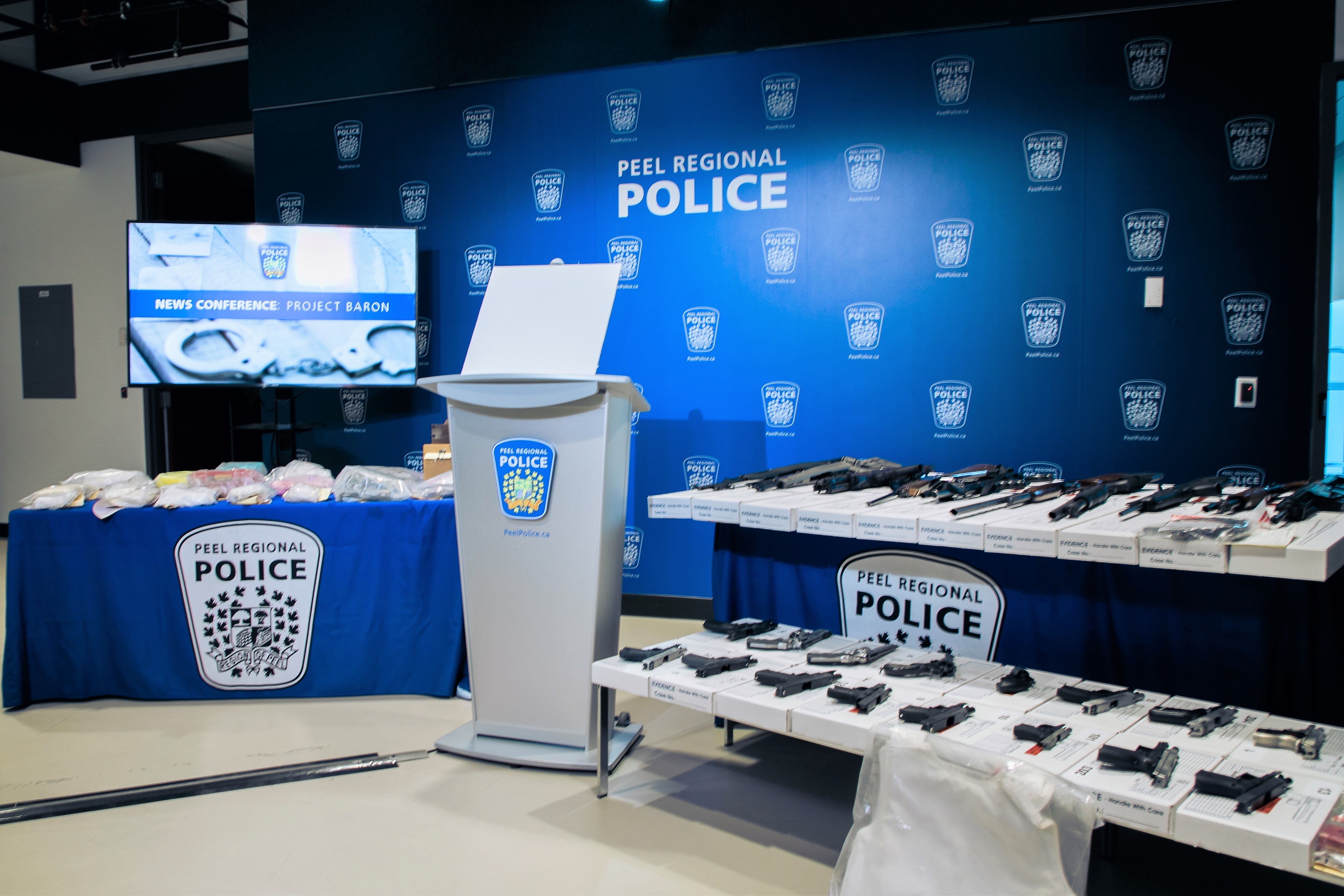
Peel police seized a large number of illegal firearms earlier this year
The RCMP’s list of firearms in that category includes AK-variant rifles like the AK-47, fully automatic guns, handguns with barrels smaller in length than 105 mm as well as sawed-off shotguns and certain guns of a prohibited calibre (32 and 25 calibre). Non-restricted firearms include so-called long guns, such as hunting rifles and shotguns. Assault-style rifles fall under the restricted category, requiring special licensing.
The RCMP lists as many as 27 variants of the M16, in which the notorious AR-15 is included. However, that is only one category of assault-style weapon listed as restricted. Four Czech made Ceská Zbrojovka type rifles — one of which was used by Bissonette during his rampage — closely resembling the Russian AK-47 are on the list, as well as 10 SAN Swiss Arms rifles that closely resemble the Swiss Army’s SIG Sauer 550 main service rifle.
Under Stephen Harper’s Conservatives, Ottawa scrapped the long-gun registry back in 2012. According to federal data, that coincided with a spike in firearm imports beginning that same year and peaking in 2014. The surge, with a total value of $751 million, rose by 79 percent over total imports between 2007 and 2011. The same data also shows a decline in imports, beginning in 1995, when the long gun registry was implemented.
The Liberals, who often blame the Harper-era move for the increase in guns on Canadian streets, promised in Friday’s announcement not to bring back the long-gun registry, which was controversial. “We will protect the rights of law-abiding hunters and pledge not to bring back the long-gun registry. Hunters do not use or need assault weapons,” said the party’s release.
Currently, safe storage laws require that firearms be unloaded and stored in a container that can be locked. There is no mention in the Liberal announcement whether a more secure container, such as a gun safe, will be required, or if the firearm will have to dismantled before storage. The policy also does not call for any changes to magazine capacities. Pistols have a limit of 10 rounds, regardless of calibre, and rifles are limited to five rounds. The Pointer reached out to the Liberal party to get specifics on how these policies are to be implemented, but did not receive a reply.
Email: [email protected]
Twitter: @mansoortanweer
Submit a correction about this story


